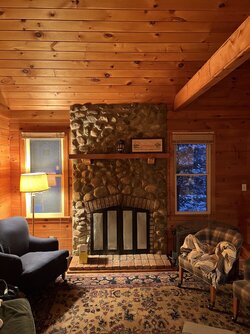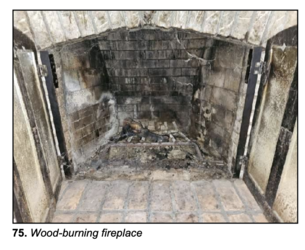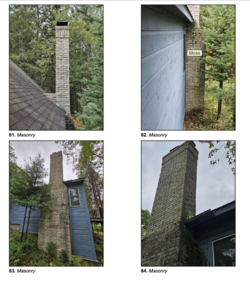Hi all,
Just discovered this site this week and it is an excellent resource. We recently purchased a small cabin in the woods (~1,000 square feet). We're in the snowbelt region of Michigan and it can get quite cold here in the winters (though not yet this winter!). We will be up here most weekends and, when work allows it, work remote for a week or so occasionally. The house was built in the 90s, but the windows are quite drafty. We're having some exterior work done on the chimney in the spring, and it got me thinking: a wood burning stove insert would be a far better use of wood than a regular old fireplace. The masonry company doing the work in the spring said it would not be an issue to have an insert installed this winter before they do their work. They don't do inserts or stoves, sadly.
The big main room of the cabin is where we spend all the time: kitchen, living room, TV, everything in one place. Very high vaulted ceilings, all knotty pine. This is also where the masonry chimney is. We'd be using the insert to supplement heating the house and take the chill out of the room from October-April-ish. The house is heated by propane. What I am curious about from experienced users here is a few things:
- What are some important questions + red flags I should ask the contractors/HVAC folks when they come out for a quote?
- What exactly should I expect in terms of process + parts? As I understand it from perusing the forums here, it seems like: new liner, insert, labor?
- This might be a dumb question, but can you have a free-standing stove installed into a masonry chimney? If so, what are the pros/cons of this vs. an insert? I've always loved a standalone wood burning stove. The opening is about 36x34.
Also, if these questions are answered elsewhere in old threads, my apologies. If you could point me to those tutorials that would be great.
Thanks!
Bill
Just discovered this site this week and it is an excellent resource. We recently purchased a small cabin in the woods (~1,000 square feet). We're in the snowbelt region of Michigan and it can get quite cold here in the winters (though not yet this winter!). We will be up here most weekends and, when work allows it, work remote for a week or so occasionally. The house was built in the 90s, but the windows are quite drafty. We're having some exterior work done on the chimney in the spring, and it got me thinking: a wood burning stove insert would be a far better use of wood than a regular old fireplace. The masonry company doing the work in the spring said it would not be an issue to have an insert installed this winter before they do their work. They don't do inserts or stoves, sadly.
The big main room of the cabin is where we spend all the time: kitchen, living room, TV, everything in one place. Very high vaulted ceilings, all knotty pine. This is also where the masonry chimney is. We'd be using the insert to supplement heating the house and take the chill out of the room from October-April-ish. The house is heated by propane. What I am curious about from experienced users here is a few things:
- What are some important questions + red flags I should ask the contractors/HVAC folks when they come out for a quote?
- What exactly should I expect in terms of process + parts? As I understand it from perusing the forums here, it seems like: new liner, insert, labor?
- This might be a dumb question, but can you have a free-standing stove installed into a masonry chimney? If so, what are the pros/cons of this vs. an insert? I've always loved a standalone wood burning stove. The opening is about 36x34.
Also, if these questions are answered elsewhere in old threads, my apologies. If you could point me to those tutorials that would be great.
Thanks!
Bill




